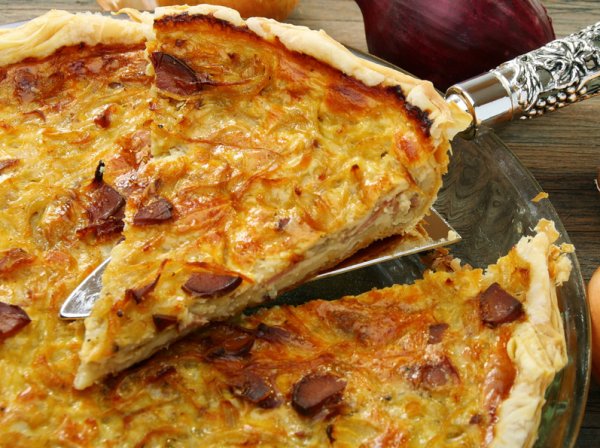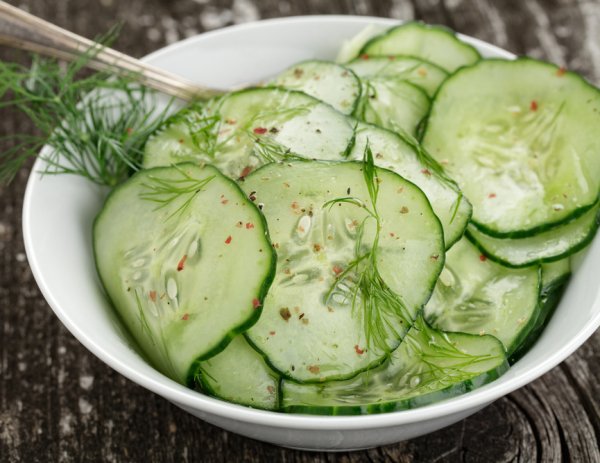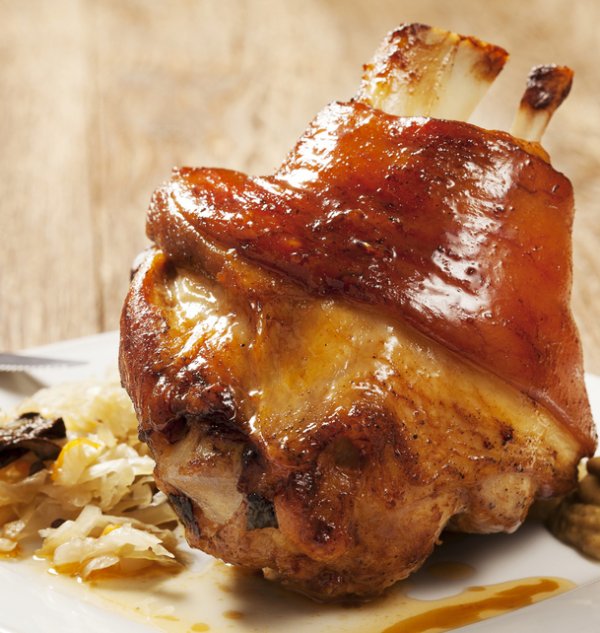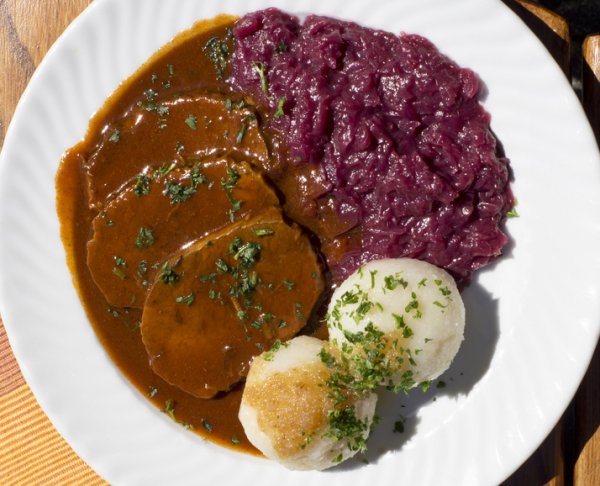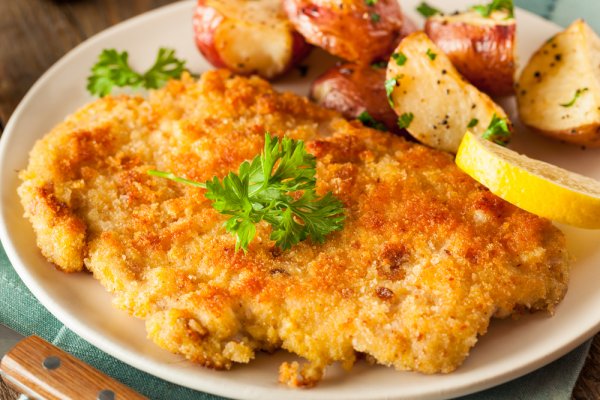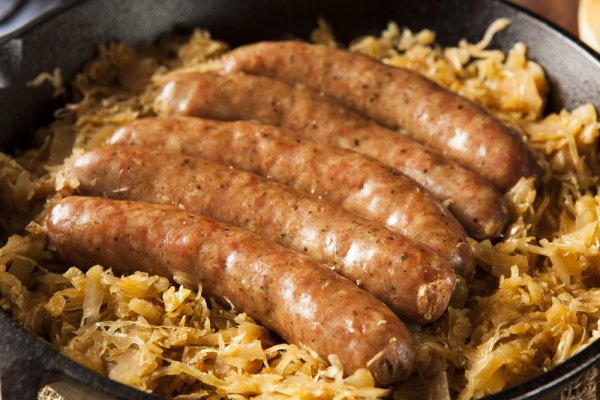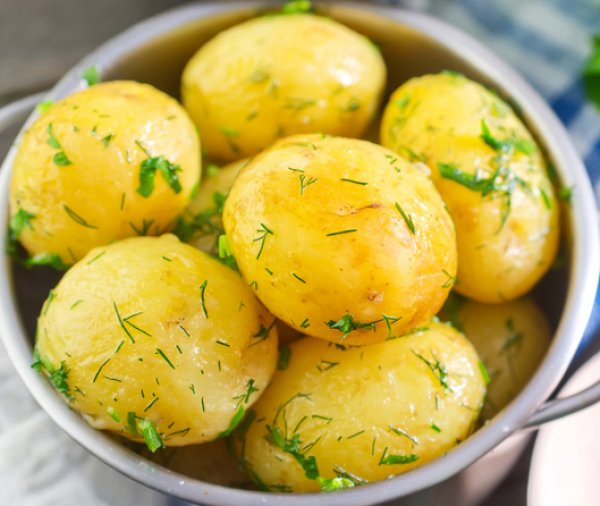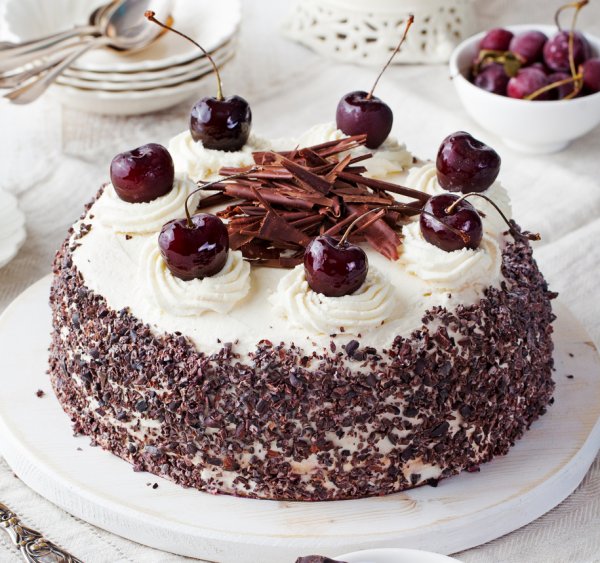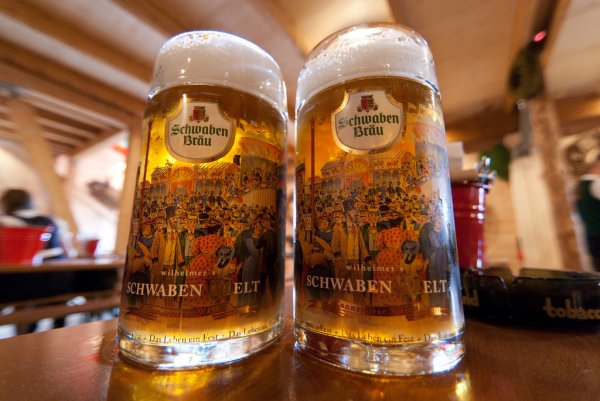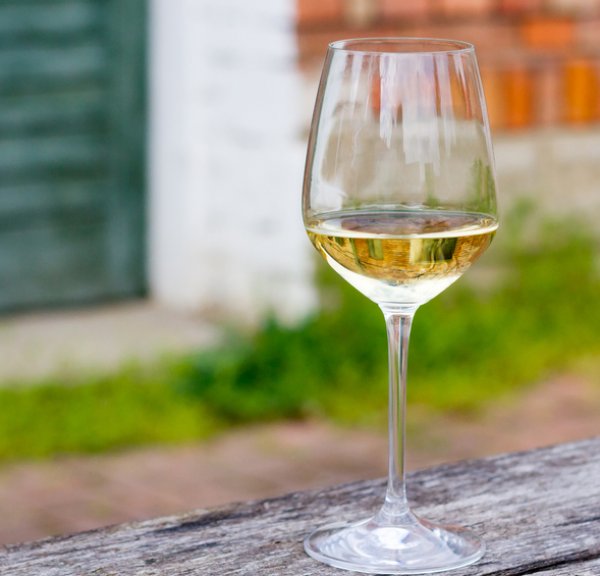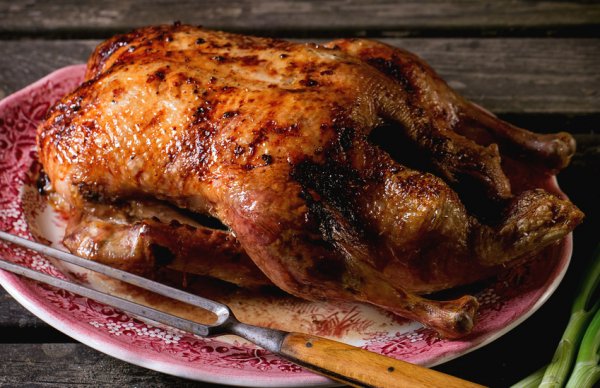Food and Drink: Classic Dishes
Listed below are a few of the many dishes associated with the cuisine of Germany. Recipes for these classic dishes and many others can be found in the Recipes section.
APPETIZERS
Zwiebelkuchen – Although the name means onion cake, this is actually a tart similar to a quiche, normally served before a meal with wine or beer.
SOUPS
Kartoffelsuppe– Potato soup, normally flavored with ham and root vegetables, is a common food that often precedes a meal as a starter.
Leberknödelsuppe – This rich meat and vegetable broth comes with liver dumplings and is usually flavored with herbs. Although the recipe varies a little from region to region, broth with liver dumplings is common all across Germany.
Linsensuppe – German lentil soup is often strongly flavored with both ham and sausage and generally includes an assortment of vegetables such as carrots, onions, leeks, or celery, a little thyme or savory, and some vinegar for flavoring.
SALADS
Gemischter Salat – Mixed salad usually includes lettuce, chopped cucumbers, carrots, cabbage, and beets in vinaigrette.
Gurkensalat – Cucumber salad, flavored with dill and oil and vinegar or a cream dressing, is a common side dish with many German meals.
Heringssalat – Herring is the most commonly eaten fish in northern Germany, especially on the coast where it is often marinated in cream or wine sauce and served as an appetizer or deep fried as a main course. Heringssalat is most commonly a starter, and it usually means cured herring in a sour cream sauce with onion, herbs such as dill, and vegetables or apple.
Kartoffelsalat – Potato salad, served warm or chilled, is an extremely common dish, though preparation varies greatly by region.
MAIN DISHES
Eisbein – Pork hocks, previously brine-cured, are a very typical German main course. They are normally poached in seasoned liquid before serving.
Forelle mit Mandeln – Trout is consumed throughout Germany, especially near rivers, and is usually sautéed or deep fried.
Klopse – Meatballs, usually an equal mixture of beef and pork, bound with bread crumbs and egg, and seasoned with onion, parsley, and other herbs or mild spices. These German meatballs are generally molded rather large and boiled, though they can also be baked, in which case they become Bouletten. Either of these may be served plain with potatoes and vegetables, though they can sometimes be dressed with a vinegar–flavored sauce.
Rollmops – Rolled herring served in a brine or sour cream sauce is popular in northern Germany. Once considered a poor man’s diet, a meal of herring and fried or boiled potatoes is now a staple in the north.
Rouladen – Thinly sliced, pounded beef seasoned with mustard, onion, ham, and often other vegetables and spices is rolled and securely tied before being browned and then poached in water or stock and served with potatoes and cabbage.
Sauerbraten – Beef, marinated in vinegar and then roasted, is a very typical German dish, normally served with gravy, spätzle, and red cabbage.
Schweinebraten – German roasted pork is generally cooked with dark beer, herbs, carrots, onions, and sometimes other aromatics.
Wiener Schnitzel – Although schnitzel is technically Austrian, thinly pounded cutlets, normally pork, always breaded and fried, are a common meal in Germany. Schnitzel is typically served with fried or mashed potatoes and a vegetable. Sometimes a gravy or sauce, particularly a mushroom sauce, is also served.
Wurst – Wurst means sausage, and there are many varieties in Germany, including many regional ones that are commonly served as meals. Well-known varieties include: Weißwurst, a mild, white veal sausage usually boiled (a particular favorite in Bavaria and normally consumed with sweet mustard and bread or soft pretzels); Bratwurst, on the other hand, is a reddish sausage made from beef and an assortment of pork products and normally pan-fried and served hot with boiled potatoes and caraway-seasoned sauerkraut. If you see Wurstplatte on the menu, it literally means sausage plate and includes a selection of sliced, cured meats such as salami, ham, blood sausage, and other sausages.
SIDE DISHES
Grünkohl –In Germany, kale is usually sautéed with onion and smoked meat.
Kartoffeln –Boiled potatoes simply seasoned with salt, pepper, and butter are a very common side dish, as are mashed potatoes, enriched with milk, cream, or butter and Bratkartoffeln (fried potatoes), which are often served with fried eggs and salad.
Knödel –Dumplings made from potatoes, called Kartoffelknödel or from dried bread, called Semmelknödel, are the most common varieties, though Knödel flavored with liver, cheese, ham, and a variety of other ingredients are also consumed. They are poached and often served as a side dish instead of potatoes.
Sauerkraut–Fermented cabbage is a typical German side dish, especially with pork or sausage. Sauerkraut recipes have many variations with such additions as apples or cloves.
Spätzle– Popular in southern Germany, spätzle are a type of small dumpling or fat egg noodle.
DESSERTS
Apfelstrudel– Cooked apples wrapped in crisp pastry and flavored with butter and vanilla are a common dessert throughout Germany, especially in autumn when apples are in season.
Berliner Pfannkuchen – Yeasted, round doughnuts filled with plum or other jams are a favorite in Berlin, especially at New Year.
Schwarzwälder Kirschtorte – Although originally from southern Germany, this cake is common throughout the country. It is a chocolate cake, normally a bit lighter than the Sachertorte, soaked with cherry brandy, filled with preserved cherries, frosted with whipped cream, and decorated with cherries and chocolate flakes or cocoa powder. The cake batter is often subtly flavored with almond.
Rote Grütze mit Vanillesoße – Mixed red berry gelatin, usually prepared with pitted cherries, strawberries, raspberries, and currents, or whatever soft reddish fruits are available. German Vanillesoße (vanilla sauce) is roughly equivalent to English custard, a thin egg and milk custard made on the stove top and strongly flavored with vanilla bean or vanilla extract.
Schaumgebäck mit Beeren – Bakes egg whites, or meringue, with seasonal berries and whipped cream is a popular summer dessert.
Sachertorte – A dense chocolate cake, usually filled with a very thin layer of apricot preserve, is a common dessert in Germany, though it is named after a Viennese hotel.
Streuselkuchen – This moist butter cake has crumbled pastry dough sprinkled on top before baking. German Streuselkuchen can be filled with fruit, but it is often plain.
BEVERAGES
Bier – Germany without beer is unthinkable! Not surprisingly, a great variety of beers are available in Germany. To name but a few, popular German beers include Pilsner, a pale, golden beer; Weißbier, a very pale, wheat beer; Helles, a pale lager from Bavaria; Berliner Weiße, a light-colored, sour beer served with raspberry or woodruff syrup; and Dunkles, a dark lager that can be sweet and malty or dry with lots of hops. The country’s most popular beverage is consumed while socializing, as an accompaniment to meals, and at most festivals and events.
Kaffee – Germans love their coffee, particularly for breakfast and at Kaffeestunde (coffee hour) in the late afternoon around 3:30 or 4 pm. Many Germans also have espresso as an after-dinner treat.
Obstler – This is a fruit schnapps served after dinner. Cognac is another a popular after-dinner drink.
Saft – Fruit juices are common throughout the country and range from Orangensaft (orange juice) and Kirschsaft (cherry juice) to a whole host of berry juices, i.e., Himbeersaft (raspberry juice) and Johannesbeersaft (red or black currant juice).
Wasser – Water is a common beverage and comes in two forms: Leitungswasser (tap water) and Mineralwasser (mineral water). Asking for Leitungswasser is often frowned upon. Unless you specifically ask for it, the waiter will assume you want mineral water—both varieties, carbonated (Mineralwasser) or non–carbonated (Stilles Wasser), come in bottles.
Wein – Wine, especially white wine, is popular in many parts of Germany, particularly with meals.
HOLIDAY FAVORITES
Gänsebraten – Roast goose is a German Christmas classic, often very simply cooked and served with red cabbage and dumplings.
Karpfen Blau – Carp, though less common now, is a traditional German Christmas Eve dinner. It is usually prepared with a butter or cream sauce.
Copyright © 1993—2025 World Trade Press. All rights reserved.

 Germany
Germany 